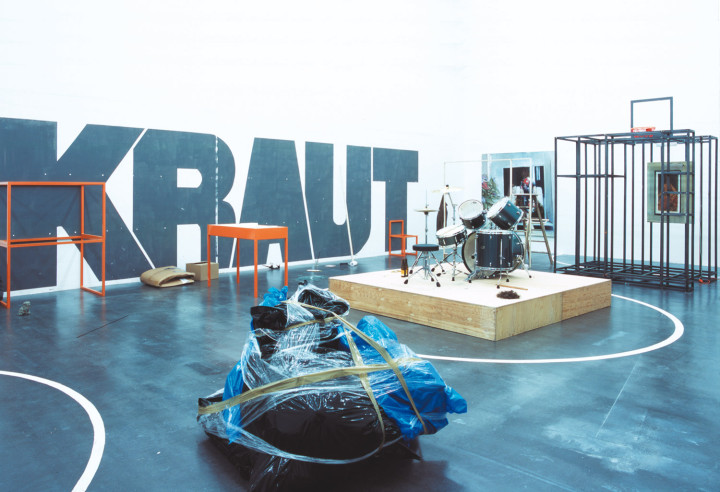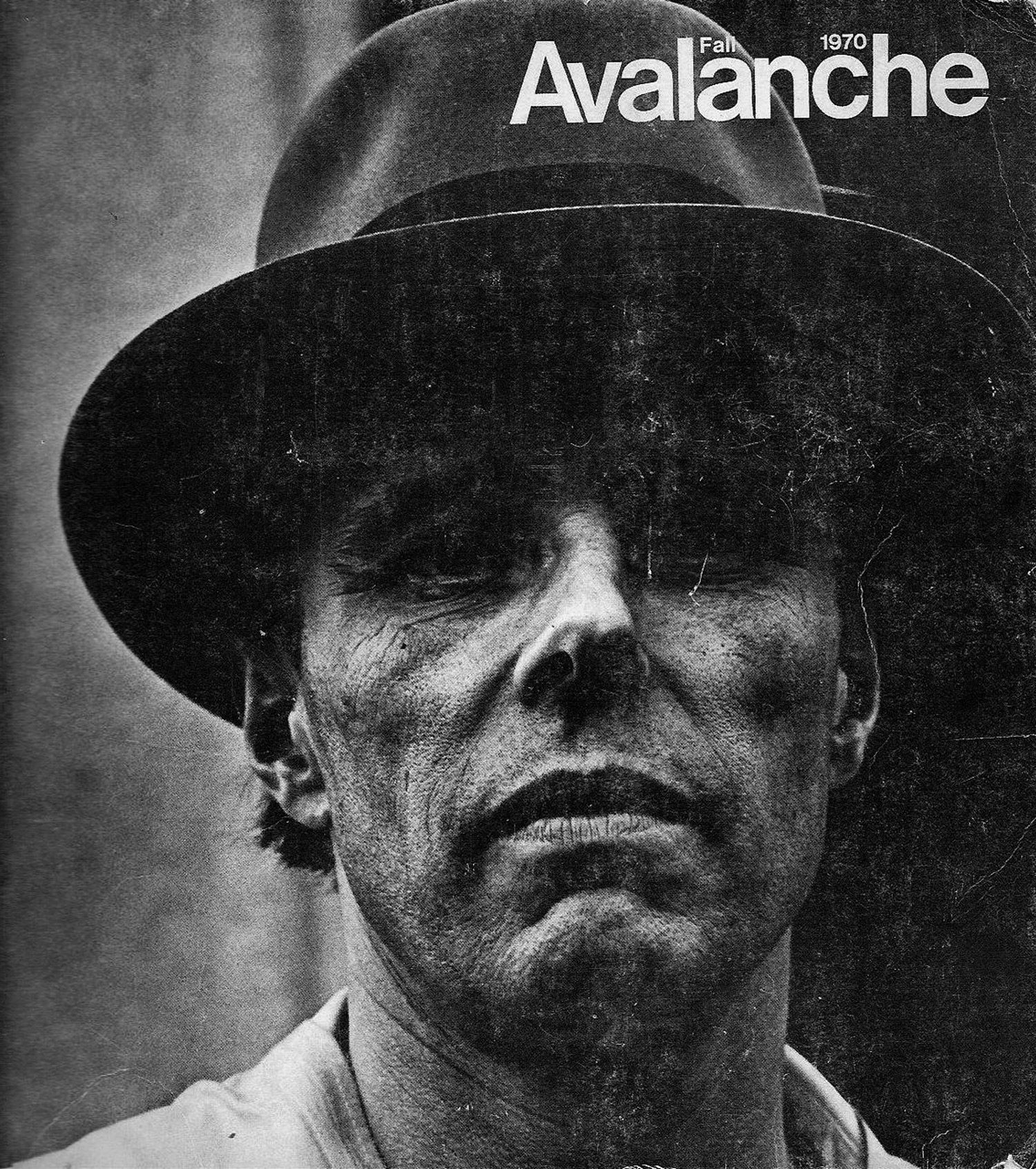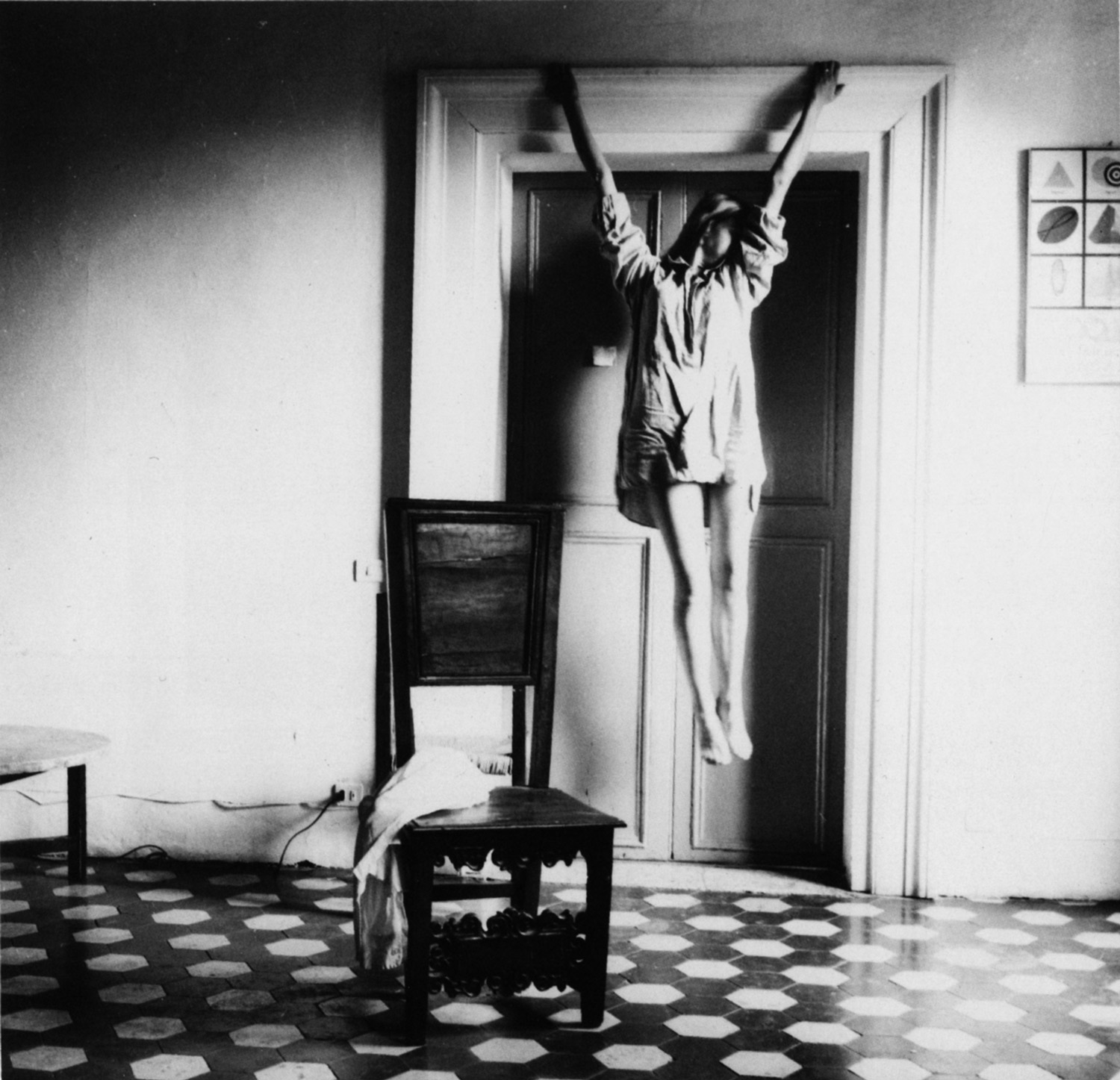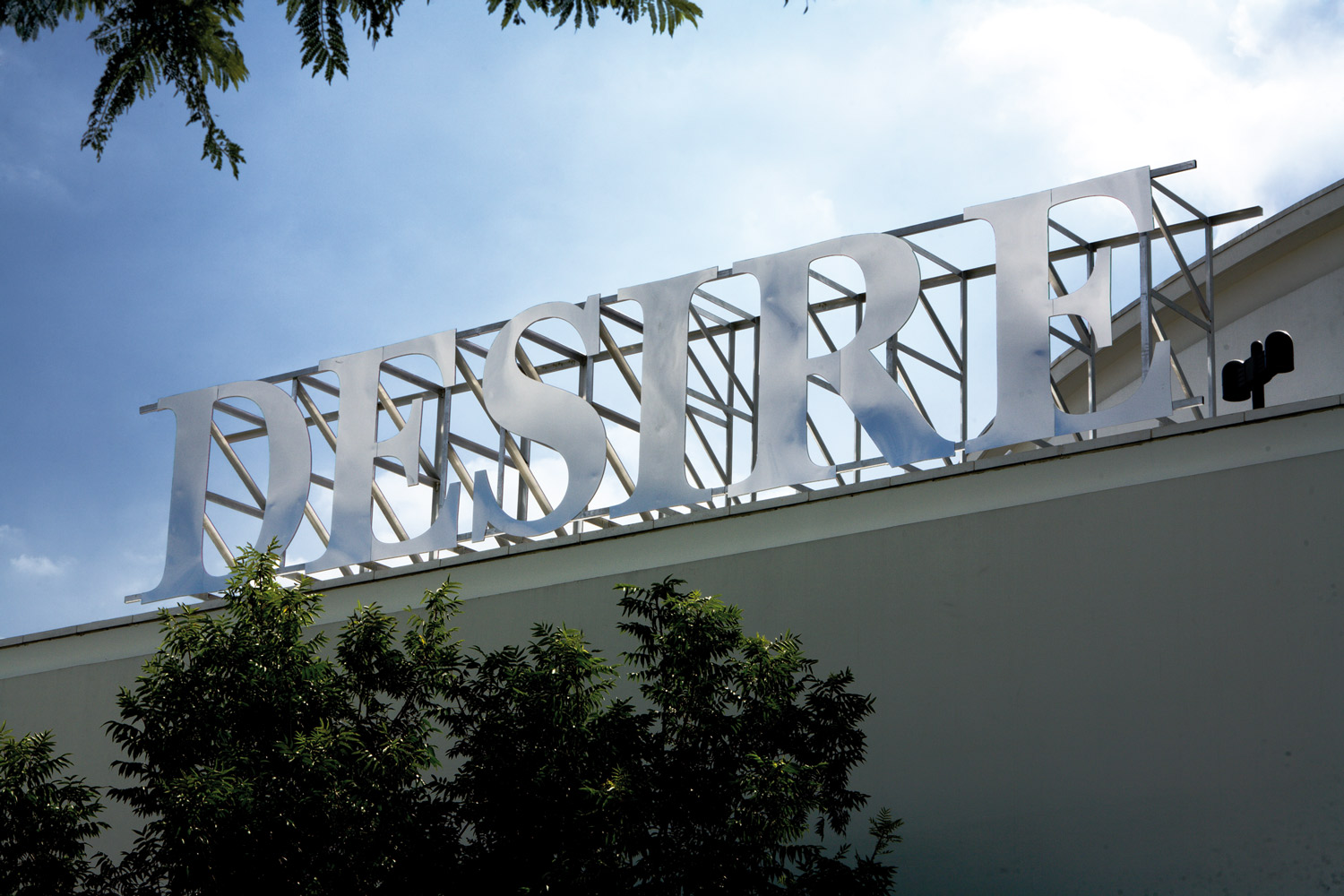![The End [of a couple of versions to move the home sick], 2006. View of the exhibition at Luis Campaña Galerie, Cologne. Photography by Alistair Overbruck.](http://flash---art.com/app/uploads/2016/12/Matthieu-Ronsse_FlashArt.jpg)
Museum space is transformed into absolute chaos. A clothing line with clean clothes hangs between two walls, underneath it there is a ‘sculpture’ of detritus assembled with the aid of plastic wrap, a little bit further along there is a coffee machine, a few dirty coffee cups, Coca-Cola bottles scattered about and enormous, overhead spotlights that illuminate everything. Having crossed this first part of the installation, one enters an architectural construction: some paintings hang on the wall and in the corner there is a washing machine. In one of the two rooms there are two electric guitars and a drum set, in the other, a mattress and a large painting. Looking through the windows of the construction, it becomes obvious that there are other paintings hung on the walls of the museum. J’ai le sentiment d’avoir oublié quelque chose (I feel like I forgot something) is the title of this installation by Matthieu Ronsse. It’s difficult to express and respond to everything that is seen and all the links that may be found between these objects and his paintings. Ronsse manages to fill each new space he works in with his universe. One time he filled a space with a noise loud enough to injure one’s eardrums. Another time he rebuilt his own apartment in the space, and on another occasion he simply installed a number of paintings and seemingly random objects. Thanks to this constructive approach, he creates a familiar space that functions like a point of departure for his artistic experiments.
When looking at Ronsse’s paintings and experiencing his environments, several aspects of art history occur to the viewer. Velasquez’s infants, equestrian portraits and classic nudes all appear in his paintings as motifs. There are also references to baroque masters via his palette, compositions and texture. What is more, it seems that in his installations he re-interprets the still-life genre. You get the impression that the ensemble is both aleatory and temporary, and yet, at the same time, that there must be a reason these objects have been placed together. The ambiance that dominates the installation is also a ‘still life,’ in the sense of an audible silence that is demarcated by explosions of sound during performances of nihilistic hardcore punk music. These performances deploy such an ecstatic charge of energy that they permanently influence how a given installation is perceived, even when calm is restored. At which point the ensuing silence becomes strange and menacing.
Ronsse is not interested in virtuosity in his paintings. Rather, he is interested in analyzing the significance of virtuosity and certain artistic canons. He neutralizes the sacred aspect of his paintings by installing them in such a way that our perception is troubled by other things. Ronsse produces, all at once, a concentrated result that has a direct impact upon the spectator, but also a complexity that continues to develop of its own accord. Just when you think you have assimilated the totality of this artist’s work, more discoveries are made and other possibilities open up.





